The Stonehenge Hoax – The Stonehenge Layer
Contents
Extract from the book…………………… The Great Stonehenge Hoax – Conundrum 8 (The Stonehenge Layer)
“Chips are Us”
The Problem
During the limited excavations at Stonehenge undertaken in the early parts of the last century, archaeologists were amazed by the number and distribution of the bluestones scattered and lying within the soil at Stonehenge. The number of stones was so great that the archaeologists called it the ‘Stonehenge layer.’ Chippings from the facing of the stones (particularly the larger Sarsen stones would be expected), but the more significant number of chippings came from the smaller, less frequent Bluestones, which has baffled the experts even today.
The Solution
Timothy Darvill, Professor of Archaeology at Bournemouth University, has revealed research that he believes shows that Stonehenge was an ancient healing place. In his book, ‘Stonehenge: The Biography of a Landscape’, the Professor cites that human remains excavated from burial mounds near Stonehenge reveal that many of the buried had been ill before their death.
Darvill also suggests that these remains are not those of local people but of people who had come travelled from far and wide. For example, the Amesbury Archer, the name given to one of the remains identified, originated from what is now known as Switzerland. The Professor believes that Stonehenge would have been predominantly used during the winter solstice when our ancestors believed it was occupied by Apollo, the Greek and Roman God of healing. (The Stonehenge Hoax – The Stonehenge Layer)
However, I would suggest that not the gods alone at Stonehenge encouraged people from across the known world to travel such vast distances. Another feature of Stonehenge still survives today is the legendary Bluestone.

Bluestones are unexceptional, igneous rocks, such as Dolerite and Rhyolite. They are so-called because they take on a bluish hue when ‘WET’. Over the centuries, legends have endowed these stones with mystical properties.
The British poet Layamon, inspired by the folklore accounts of 12th Century cleric Geoffrey of Monmouth, wrote in 1215:
The stones are great
And magic power they have
Men that are sick
Fare to that stone
And they wash that stone
And with that water bathe away their sickness
This ancient poem clearly shows that the sick would BATHE away their illnesses. I find it surprising that Professor Darvill never linked this revealing poem to his hypothesis. Recently, findings by Professor Mike Parker Pearson of Sheffield University have revealed a smaller version of Stonehenge, confirming the link between Bluestones and WATER. (The Stonehenge Hoax – The Stonehenge Layer)
The BBC reported that:
‘About a mile away from Stonehenge, at the end of the ‘Avenue’ that connects it to the River Avon, archaeologists have discovered a smaller prehistoric site, named – appropriately, after the colour of the 27 Welsh stones it was made of – ‘Bluehenge’. The newly discovered stone circle is thought to have been put up 5,000 years ago – which is around the same time work on Stonehenge began – and appears to be a miniature version of it.’
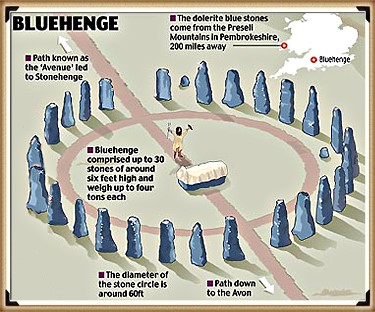
Hawley discovered another exciting aspect of the moat at Stonehenge was the number of ‘craters’ found at the bottom of the ditch. These craters were large enough to have accommodated quite large Bluestones. Hawley, in one particular part of the Moat, found a two-metre wide hole which he described as a post hole – this, however, is too big for a post, but it could easily have been a stone hole as its size and shape were similar to the remaining standing Bluestones we see today in front of the Sarsen Stone circle.
It should be remembered that Bluestones aren’t the same size as the Sarsen Stones; they’re much smaller; an average visitor to the Stonehenge monument may quite quickly scan over them without really noticing their presence. Archaeologists currently believe that their small size is because they are what remains after the damage by souvenir hunters over the years.
But I propose that they may have not been small when brought to Stonehenge originally, for they have little to no building quality but as a healing agent to be placed at the edge and in the Moat to initiate their medical remedy. As an indication of how these stones were initially used, archaeologists have identified a colossal amount of Bluestone chippings covering the entire site at Stonehenge, 3,600 in fact, so many they call the soil surrounding which contain these shards ‘The Stonehenge Layer’.

I would suggest that just as we enjoy adding a variety of salts to our baths today, so did the Mesolithic people – they would have added a small amount of Bluestone chippings into the moat as he bathed. Their healing qualities would have been enhanced by chipping the Bluestones and revealing the inner core.
The traditional view of why these quantities of Bluestone chippings are abundant is that they were ‘worked’ upon and reshaped to fit the holes that had already been prepared. This seems completely illogical – why would anyone in their right mind undertake the gruelling task of working on this burdensome stone to fit into the holes when it would have been so much easier to have dug the chalk soil first to accommodate the shape of the stones? Another traditional view is that the many chippings found were remnants from ‘dressing’ by reshaping these Bluestones.
We know that the more massive Sarsen Stones were dressed on the inner side of the stone circle, as the flake marks are still visible – but there is no evidence to date that the bluestones were also dressed.
Given that archaeologists believe that the Bluestone chips exist only because of the re-working by our ancestors or the results of Victorian souvenir hunters, it would be interesting to compare their number (3,675) to the number of chippings discovered from the softer, easier-to-break, more famous and more plentiful Sarsen Stones, which we know were re-worked. (The Stonehenge Hoax – The Stonehenge Layer)
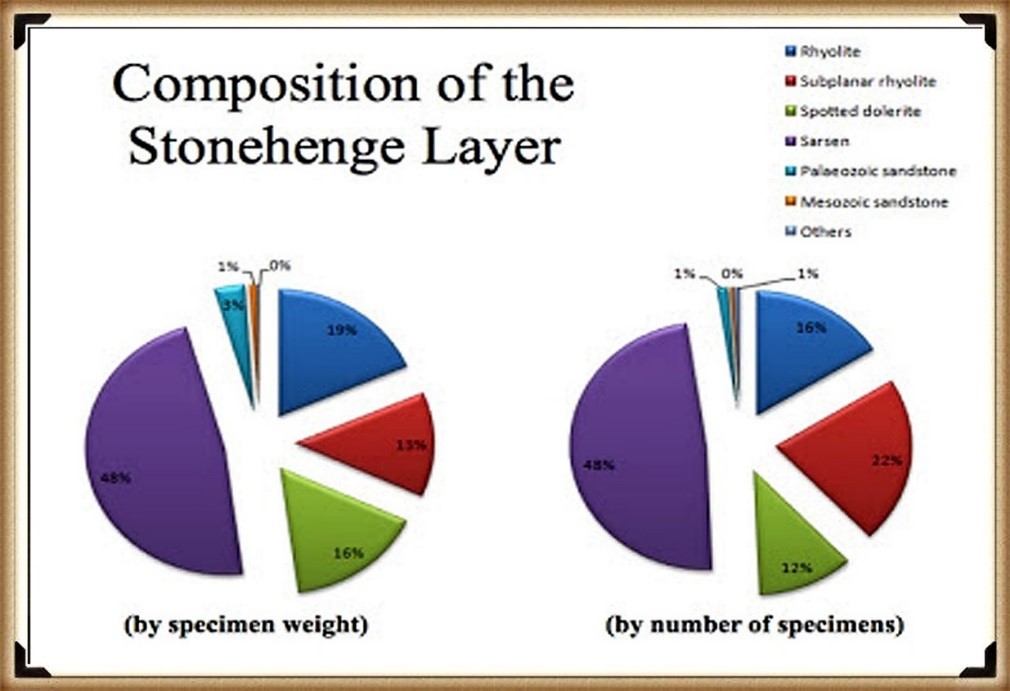
You would think, proportionately (251 cubic metres of Sarsen Stones v 28 metric metres of Bluestones), there would be a lot more Sarsen stone chipping to Bluestones – but you would be wrong!! Only 2,173 Sarsen Stone pieces have been found despite over nine times more Sarsen Stones than Bluestones.
So, assuming that there would have been a similar level of interest in Blue and Sarsen Stones by souvenir hunters and an equal amount of re-working of the stones by our ancestors, you would expect to find at least 30,000 Sarsen Stone fragments but has already shown a paltry 2,173 have been discovered. Or, if 2,173 Sarsen stone pieces were the norm for both re-working and souvenir hunters – they should have found only 240 bluestone fragments and not the 3,675 (Cleal et al.,1995, pp. 379 – 387).
I can, therefore, very confidently conclude that the Bluestones were deliberately broken up to be used in the moat. Our ancestors are likely to have believed that once the outside covering of the Bluestones had been thoroughly exhausted, the beneficial properties would be diminished, and so they were abandoned.
This is confirmed by Tim Darvill and Geoffrey Wainwright, who stated, “Our excavations within Stonehenge in 2008 confirmed what earlier excavations had hinted at: namely that the Bluestones started to be broken up and chipped away more or less from the time they were set up in each successive arrangement.”
The concept of a prehistoric person bathing away his ills may seem absurd to some, but throughout history, it has been shown that humanity has been attracted to this type of treatment. For example, during the Roman Empire some 2,000 years ago, it became commonplace in Britain when every large villa had its spa. (The Stonehenge Hoax – The Stonehenge Layer)
Therefore, is it a giant leap to imagine that the origin of such activities could have been introduced at an early period?
When the moat at Stonehenge had eventually dried up in the Bronze Age and could no longer be used as a spa, these smaller Bluestones were abandoned and scattered throughout the site. The larger Bluestones at the bottom of the dried moat were probably removed to the stone circle, explaining the considerable variation in shapes and sizes of stone that we see at the Stonehenge monument today. (The Stonehenge Hoax – The Stonehenge Layer)
AI Update (2024)
Using the power of AI we can now obtain the size and number of Bluestones originally sent to Stonehenge:
Using the newly presented data—both from the provided link and the pie chart data attributed to Darvill (2008)—we can attempt a rough, theoretical estimate of the original number and types of bluestones brought to Stonehenge. It’s important to stress that this is an approximation based on fragment proportions, and actual ancient distributions may have differed due to various factors (breakage patterns, selective removal, reuse, and so forth).
Step-by-Step Reasoning:
- Overall Composition (from Darvill’s data)
The pie charts show the composition of Stonehenge Layer fragments by both weight and by number of specimens. For simplicity, let’s use the “by number of specimens” chart, since it directly relates to how many individual pieces of each type might once have existed. According to that chart, the approximate percentages of total fragments are:- Sarsen: 48%Rhyolite: 16%Subplanar Rhyolite: 22%Spotted Dolerite: 12%Paleozoic Sandstone: 1%Mesozoic Sandstone: 1%Others: negligible
- Total Number of Stones Originally at Stonehenge
It’s widely accepted that Stonehenge originally featured around 80 sarsen stones. Archaeologists also agree that roughly a similar number (around 80) of smaller “bluestones” were brought to the site from various sources in Wales and perhaps other regions. The current visible tally of bluestones is fewer, due to loss, breakage, and removal over millennia, but estimates usually revolve around an initial complement of about 70–80 bluestones.Given the data and common archaeological consensus:- Approximately 80 sarsens
- Approximately 80 bluestones (of various lithologies)
- Breaking Down the Bluestone Types
The bluestones are all the non-sarsen categories combined (Rhyolite, Subplanar Rhyolite, Spotted Dolerite, Paleozoic Sandstone, Mesozoic Sandstone). Together they total 52% of the fragments. Let’s find out what fraction of the bluestones each type represents by comparing each bluestone type’s percentage to the total 52%:- Rhyolite: 16% (of total) / 52% (total bluestone) ≈ 30.8% of bluestones
- Subplanar Rhyolite: 22% / 52% ≈ 42.3% of bluestones
- Spotted Dolerite: 12% / 52% ≈ 23.1% of bluestones
- Paleozoic Sandstone: 1% / 52% ≈ 1.9% of bluestones
- Mesozoic Sandstone: 1% / 52% ≈ 1.9% of bluestones
- Estimating Actual Numbers of Each Bluestone Type
If we assume around 80 bluestones in total and apply these percentages, we can estimate the count of each type:- Rhyolite: ~31% of 80 = about 25 rhyolite stones
- Subplanar Rhyolite: ~42% of 80 = about 34 subplanar rhyolite stones
- Spotted Dolerite: ~23% of 80 = about 18 spotted dolerite stones
- Paleozoic Sandstone: ~2% of 80 = about 1–2 stones
- Mesozoic Sandstone: ~2% of 80 = about 1–2 stones
Caveats and Considerations:
- Fragmentation Bias: The distribution of fragments may not exactly match the original number of stones. Some stone types might break more easily or have been targeted for chipping, skewing the fragment count.
- Selective Removal and Weathering: Over thousands of years, some stones may have been moved, recycled, or eroded differently, affecting fragment representation.
- Symbolic or Functional Choices: The builders may have chosen certain stone types for specific reasons, and these choices may not correlate neatly with present-day fragment counts.
Despite these uncertainties, the rough calculation aligns with the general archaeological understanding: Stonehenge likely had around 80 bluestones originally, composed mainly of rhyolitic stones (in both standard and subplanar varieties) and spotted dolerites, with just a small portion of other rock types.
Table from Known Bluestone sites
| Confirmed Quarry Site | Stone Type(s) | Approximate Number of Original Stones | Notes |
|---|---|---|---|
| Carn Goedog (Preseli Hills, Wales) | Spotted Dolerite | ~20–30 stones | Identified as the principal source for the spotted dolerite bluestones at Stonehenge. |
| Craig Rhos-y-felin (Preseli Hills, Wales) | Rhyolite and Subplanar Rhyolite | ~30–40 stones | Confirmed as a key quarry for the various rhyolite bluestones, including distinct subplanar forms. |
Note:
- The total number of original bluestones is commonly estimated to be around 70–80. The figures provided above are rough estimates derived from fragment analysis and the percentage distribution of stone types.
- Further research may adjust these numbers as more precise provenancing and excavation results become available.
Unearth the Astonishing Secrets of Stonehenge (The Stonehenge Hoax)
Introduction
Video
(The Stonehenge Hoax – The Stonehenge Layer)
Synopsys
Stonehenge, a timeless enigma etched in stone and earth, has stood as a formidable puzzle challenging the intellects of archaeologists and historians alike. Despite the myriad attempts, including books, TV programs, and academic conferences, the secrets of these ancient stones and their encircling ditches have proven elusive. Against this backdrop, we scrutinise the existing thirteen hypotheses, each presenting its narrative but collectively lacking a coherent thread. (The Stonehenge Hoax – The Stonehenge Layer)
In adopting the deductive reasoning akin to Sherlock Holmes, we endeavour to weave these disparate threads into a unified tapestry that not only unravels the mystery of Stonehenge but also shakes the foundations of established academic narratives. This intellectual journey may induce some discomfort as we challenge conventional perceptions and invite a reevaluation of our understanding of the past. Apologies are extended in advance for any cognitive dissonance, but the pursuit of truth and reason mandates an unfiltered presentation of the facts.
So, fasten your seatbelts for an expedition into the archaeological unknown.
As we navigate this intellectual rollercoaster, be prepared for a revelation that might reshape our understanding of Stonehenge and question the foundations of our historical narratives. The dawn of a new archaeological era awaits promising insights that could leave even the most curious minds astonished. As we delve into this intellectual rabbit hole, be ready for a revelation that could make Alice astonished. (The Stonehenge Hoax – The Stonehenge Layer)
Robert John Langdon (2023) – (The Stonehenge Hoax)
The Journey
Langdon’s journey was marked by meticulous mapping and years of research, culminating in a hypothesis that would reshape our understanding of prehistoric Britain. He proposed that much of the British Isles had once been submerged in the aftermath of the last ice age, with these ancient sites strategically positioned along the ancient shorelines. His groundbreaking maps offered a fresh perspective, suggesting that Avebury had functioned as a bustling trading hub for our ancient ancestors. This audacious theory challenged the prevailing notion that prehistoric societies were isolated and disconnected, instead highlighting their sophistication in trade and commerce.
In the realm of historical discovery, the audacious thinkers, the mavericks who dare to question established narratives, propel our understanding forward. Robert John Langdon is undeniably one of these thinkers. With a deep passion for history and an unyielding commitment to his research, he has unearthed a hidden chapter in the story of Avebury that transcends the boundaries of time and offers fresh insights into our shared human history.
As Langdon’s trilogy, ‘The Stonehenge Enigma,’ continues to explore these groundbreaking theories, it beckons us to embark on a journey of discovery, to challenge our assumptions, and to embrace the possibility that the past is far more complex and interconnected than we ever imagined. With its ancient stones and enigmatic avenues, Avebury continues to whisper its secrets to those who dare to listen, inviting us to see history through a new lens—one illuminated by the audacious vision of Robert John Langdon.
(The Stonehenge Hoax – The Stonehenge Layer)
The Book
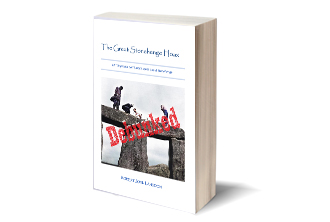
Further Reading
For information about British Prehistory, visit www.prehistoric-britain.co.uk for the most extensive archaeology blogs and investigations collection, including modern LiDAR reports. This site also includes extracts and articles from the Robert John Langdon Trilogy about Britain in the Prehistoric period, including titles such as The Stonehenge Enigma, Dawn of the Lost Civilisation and the ultimate proof of Post Glacial Flooding and the landscape we see today.
Robert John Langdon has also created a YouTube web channel with over 100 investigations and video documentaries to support his classic trilogy (Prehistoric Britain). He has also released a collection of strange coincidences that he calls ‘13 Things that Don’t Make Sense in History’ and his recent discovery of a lost Stone Avenue at Avebury in Wiltshire called ‘Silbury Avenue – the Lost Stone Avenue’. (The Stonehenge Hoax – The Stonehenge Layer)
Langdon has also produced a series of ‘shorts’, which are extracts from his main body of books:
(The Stonehenge Hoax – The Stonehenge Layer)
Other Blogs
1
a
- AI now Supports – Homo Superior
- AI now supports my Post-Glacial Flooding Hypothesis
- Alexander the Great sailed into India – where no rivers exist today
- Ancient Prehistoric Canals – The Vallum
- Ancient Secrets of Althorp – debunked
- Antler Picks built Ancient Monuments – yet there is no real evidence
- Antonine Wall – Prehistoric Canals (Dykes)
- Archaeological ‘pulp fiction’ – has archaeology turned from science?
- Archaeological Pseudoscience
- Archaeology in the Post-Truth Era
- Archaeology: A Bad Science?
- Archaeology: A Harbour for Fantasists?
- Archaeology: Fact or Fiction?
- Archaeology: The Flaws of Peer Review
- Archaeology’s Bayesian Mistake: Stop Averaging the Past
- Are Raised Beaches Archaeological Pseudoscience?
- Atlantis Found: The Mathematical Proof That Plato’s Lost City Was Doggerland
- ATLANTIS: Discovery with Dan Snow Debunked
- Avebury Ditch – Avebury Phase 2
- Avebury Post-Glacial Flooding
- Avebury through time
- Avebury’s great mystery revealed
- Avebury’s Lost Stone Avenue – Flipbook
b
- Battlesbury Hill – Wiltshire
- Beyond Stone and Bone: Rethinking the Megalithic Architects of Northern Europe
- BGS Prehistoric River Map
- Blackhenge: Debunking the Media misinterpretation of the Stonehenge Builders
- Brain capacity (Cro-Magnon Man)
- Brain capacity (Cro-Magnon Man)
- Britain’s First Road – Stonehenge Avenue
- Britain’s Giant Prehistoric Waterways
- British Roman Ports miles away from the coast
c
- Caerfai Promontory Fort – Archaeological Nonsense
- Car Dyke – ABC News PodCast
- Car Dyke – North Section
- CASE STUDY – An Inconvenient TRUTH (Craig Rhos Y Felin)
- Case Study – River Avon
- Case Study – Woodhenge Reconstruction
- Chapter 2 – Craig Rhos-Y-Felin Debunked
- Chapter 2 – Stonehenge Phase I
- Chapter 2 – Variation of the Species
- Chapter 3 – Post Glacial Sea Levels
- Chapter 3 – Stonehenge Phase II
- Chapter 7 – Britain’s Post-Glacial Flooding
- Cissbury Ring through time
- Cro-Magnon Megalithic Builders: Measurement, Biology, and the DNA
- Cro-Magnons – An Explainer
d
- Darwin’s Children – Flipbook
- Darwin’s Children – The Cro-Magnons
- Dawn of the Lost Civilisation – Flipbook
- Dawn of the Lost Civilisation – Introduction
- Digging for Britain – Cerne Abbas 1 of 2
- Digging for Britain Debunked – Cerne Abbas 2
- Digging Up Britain’s Past – Debunked
- DLC Chapter 1 – The Ascent of Man
- Durrington Walls – Woodhenge through time
- Dyke Construction – Hydrology 101
- Dykes Ditches and Earthworks
- DYKES of Britain
e
f
g
h
- Hadrian’s Wall – Military Way Hoax
- Hadrian’s Wall – the Stanegate Hoax
- Hadrian’s Wall LiDAR investigation
- Hambledon Hill – NOT an ‘Iron Age Fort’
- Hayling Island Lidar Maps
- Hidden Sources of Ancient Dykes: Tracing Underground Groundwater Fractals
- Historic River Avon
- Hollingsbury Camp Brighton
- Hollows, Sunken Lanes and Palaeochannels
- Homo Superior – Flipbook
- Homo Superior – History’s Giants
- How Lidar will change Archaeology
i
l
m
- Maiden Castle through time
- Mathematics Meets Archaeology: Discovering the Mesolithic Origins of Car Dyke
- Mesolithic River Avon
- Mesolithic Stonehenge
- Minerals found in Prehistoric and Roman Quarries
- Mining in the Prehistoric to Roman Period
- Mount Caburn through time
- Mysteries of the Oldest Boatyard Uncovered
- Mythological Dragons – a non-existent animal that is shared by the World.
o
- Offa’s Dyke Flipbook
- Old Sarum Lidar Map
- Old Sarum Through Time…………….
- On Sunken Lands of the North Sea – Lived the World’s Greatest Civilisation.
- OSL Chronicles: Questioning Time in the Geological Tale of the Avon Valley
- Oswestry LiDAR Survey
- Oswestry through time
- Oysters in Archaeology: Nature’s Ancient Water Filters?
p
- Pillow Mounds: A Bronze Age Legacy of Cremation?
- Post Glacial Flooding – Flipbook
- Prehistoric Burial Practices of Britain
- Prehistoric Canals – Wansdyke
- Prehistoric Canals – Wansdyke
- Prehistoric Canals (Dykes) – Great Chesters Aqueduct (The Vallum Pt. 4)
- Prehistoric Canals (Dykes) – Hadrian’s Wall Vallum (pt 1)
- Prehistoric Canals (Dykes) – Offa’s Dyke (Chepstow)
- Prehistoric Canals (Dykes) – Offa’s Dyke (LiDAR Survey)
- Prehistoric Canals (Dykes) – Offa’s Dyke Survey (End of Section A)
- Prehistoric Canals (Dykes) – Wansdyke (4)
- Prehistoric Canals Wansdyke 2
- Professor Bonkers and the mad, mad World of Archaeology
r
- Rebirth in Stone: Decrypting the Winter Solstice Legacy of Stonehenge
- Rediscovering the Winter Solstice: The Original Winter Festival
- Rethinking Ancient Boundaries: The Vallum and Offa’s Dyke”
- Rethinking Ogham: Could Ireland’s Oldest Script Have Begun as a Tally System?
- Rethinking The Past: Mathematical Proof of Langdon’s Post-Glacial Flooding Hypothesis
- Revolutionising History: Car Dyke Unveiled as Prehistoric & the Launch of FusionBook 360
- Rising Evidence, Falling Rivers: The Real Story of Europe’s First Farmers
- Rivers of the Past Were Higher: A Fresh Perspective on Prehistoric Hydrology
s
- Sea Level Changes
- Section A – NY26SW
- Section B – NY25NE & NY26SE
- Section C – NY35NW
- Section D – NY35NE
- Section E – NY46SW & NY45NW
- Section F – NY46SE & NY45NE
- Section G – NY56SW
- Section H – NY56NE & NY56SE
- Section I – NY66NW
- Section J – NY66NE
- Section K – NY76NW
- Section L – NY76NE
- Section M – NY87SW & NY86NW
- Section N – NY87SE
- Section O – NY97SW & NY96NW
- Section P – NY96NE
- Section Q – NZ06NW
- Section R – NZ06NE
- Section S – NZ16NW
- Section T – NZ16NE
- Section U – NZ26NW & NZ26SW
- Section V – NZ26NE & NZ26SE
- Silbury Avenue – Avebury’s First Stone Avenue
- Silbury Hill
- Silbury Hill / Sanctuary – Avebury Phase 3
- Somerset Plain – Signs of Post-Glacial Flooding
- South Cadbury Castle – Camelot
- Statonbury Camp near Bath – an example of West Wansdyke
- Stone me – the druids are looking the wrong way on Solstice day
- Stone Money – Credit System
- Stone Transportation and Dumb Censorship
- Stonehenge – Monument to the Dead
- Stonehenge Hoax – Dating the Monument
- Stonehenge Hoax – Round Monument?
- Stonehenge Hoax – Summer Solstice
- Stonehenge LiDAR tour
- Stonehenge Phase 1 — Britain’s First Monument
- Stonehenge Phase I (The Stonehenge Landscape)
- Stonehenge Solved – Pythagorean maths put to use 4,000 years before he was born
- Stonehenge Stone Transportation
- Stonehenge Through Time
- Stonehenge, Doggerland and Atlantis connection
- Stonehenge: Discovery with Dan Snow Debunked
- Stonehenge: The Worlds First Computer
- Stonehenge’s The Lost Circle Revealed – DEBUNKED
t
- Ten Reasons Why Car Dyke Blows Britain’s Earthwork Myths Out of the Water
- Ten Things You Didn’t Know About Britain’s Prehistoric Flooded Past
- Ten thousand year old boats found on Northern Europe’s Hillsides
- Ten thousand-year-old boats found on Northern Europe’s Hillsides
- The “Hunter-Gatherer” Myth: Why It’s Time to Bury This Outdated Term
- The Ancient Mariners – Flipbook
- The Ancient Mariners – Prehistoric seafarers of the Mesolithic
- The Beringian Migration Myth: Why the Peopling of the Americas by Foot is Mathematically and Logistically Impossible
- The Bluestone Enigma
- The Cro-Magnon Cover-Up: How DNA and PR Labels Erased Our Real Ancestry
- The Dolmen and Long Barrow Connection
- The Durrington Walls Hoax – it’s not a henge?
- The Dyke Myth Collapses: Excavation and Dating Prove Britain’s Great Dykes Are Prehistoric Canals
- The First European Smelted Bronzes
- The Fury of the Past: Natural Disasters in Historical and Prehistoric Britain
- The Giant’s Graves of Cumbria
- The Giants of Prehistory: Cro-Magnon and the Ancient Monuments
- The Great Antler Pick Hoax
- The Great Chichester Hoax – A Bridge too far?
- The Great Dorchester Aqueduct Hoax
- The Great Farming Hoax – (Einkorn Wheat)
- The Great Farming Migration Hoax
- The Great Hadrian’s Wall Hoax
- The Great Iron Age Hill Fort Hoax
- The Great Offa’s Dyke Hoax
- The Great Prehistoric Migration Hoax
- The Great Stone Transportation Hoax
- The Great Stonehenge Hoax
- The Great Wansdyke Hoax
- The Henge and River Relationship
- The Logistical Impossibility of Defending Maiden Castle
- The Long Barrow Mystery
- The Long Barrow Mystery: Unraveling Ancient Connections
- The Lost Island of Avalon – revealed
- The Maiden Way Hoax – A Closer Look at an Ancient Road’s Hidden History
- The Maths – LGM total ice volume
- The Mystery of Pillow Mounds: Are They Really Medieval Rabbit Warrens?
- The Old Sarum Hoax
- The Oldest Boat Yard in the World found in Wales
- The Perils of Paradigm Shifts: Why Unconventional Hypotheses Get Branded as Pseudoscience
- The Post-Glacial Flooding Hypothesis – Flipbook
- The Post-Glacial Flooding Theory
- The Problem with Hadrian’s Vallum
- The Rise of the Cro-Magnon (Homo Superior)
- The Roman Military Way Hoax
- The Silbury Hill Lighthouse?
- The Stonehenge Avenue
- The Stonehenge Avenue
- The Stonehenge Code: Unveiling its 10,000-Year-Old Secret
- The Stonehenge Enigma – Flipbook
- The Stonehenge Enigma: What Lies Beneath? – Debunked
- The Stonehenge Hoax – Bluestone Quarry Site
- The Stonehenge Hoax – Flipbook
- The Stonehenge Hoax – Moving the Bluestones
- The Stonehenge Hoax – Periglacial Stripes
- The Stonehenge Hoax – Station Stones
- The Stonehenge Hoax – Stonehenge’s Location
- The Stonehenge Hoax – The Ditch
- The Stonehenge Hoax – The Slaughter Stone
- The Stonehenge Hoax – The Stonehenge Layer
- The Stonehenge Hoax – Totem Poles
- The Stonehenge Hoax – Woodhenge
- The Stonehenge Hospital
- The Subtropical Britain Hoax
- The Troy, Hyperborea and Atlantis Connection
- The Vallum @ Hadrian’s Wall – it’s Prehistoric!
- The Vallum at Hadrian’s Wall (Summary)
- The Woodhenge Hoax
- Three Dykes – Kidland Forest
- Top Ten misidentified Fire Beacons in British History
- Troy Debunked
- TSE – DVD Barrows
- TSE DVD – An Inconvenient Truth
- TSE DVD – Antler Picks
- TSE DVD – Avebury
- TSE DVD – Durrington Walls & Woodhenge
- TSE DVD – Dykes
- TSE DVD – Epilogue
- TSE DVD – Stonehenge Phase I
- TSE DVD – Stonehenge Phase II
- TSE DVD – The Post-Glacial Hypothesis
- TSE DVD Introduction
- TSE DVD Old Sarum
- Twigs, Charcoal, and the Death of the Saxon Dyke Myth
w
- Wansdyke – Short Film
- Wansdyke East – Prehistoric Canals
- Wansdyke Flipbook
- Wansdyke LiDAR Flyover
- Wansdyke: A British Frontier Wall – ‘Debunked’
- Was Columbus the first European to reach America?
- White Sheet Camp
- Why a Simple Fence Beats a Massive Dyke (and What That Means for History)
- Windmill Hill – Avebury Phase 1
- Winter Solstice – Science, Propaganda and Indoctrination
- Woodhenge – the World’s First Lighthouse?
(The Stonehenge Hoax – The Stonehenge Layer)


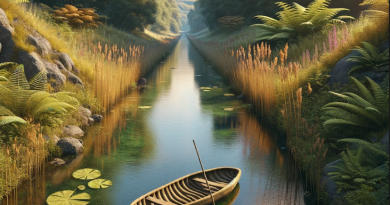
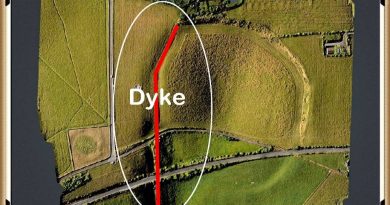

Pingback: The Great Stone Transportation Hoax - Prehistoric Britain